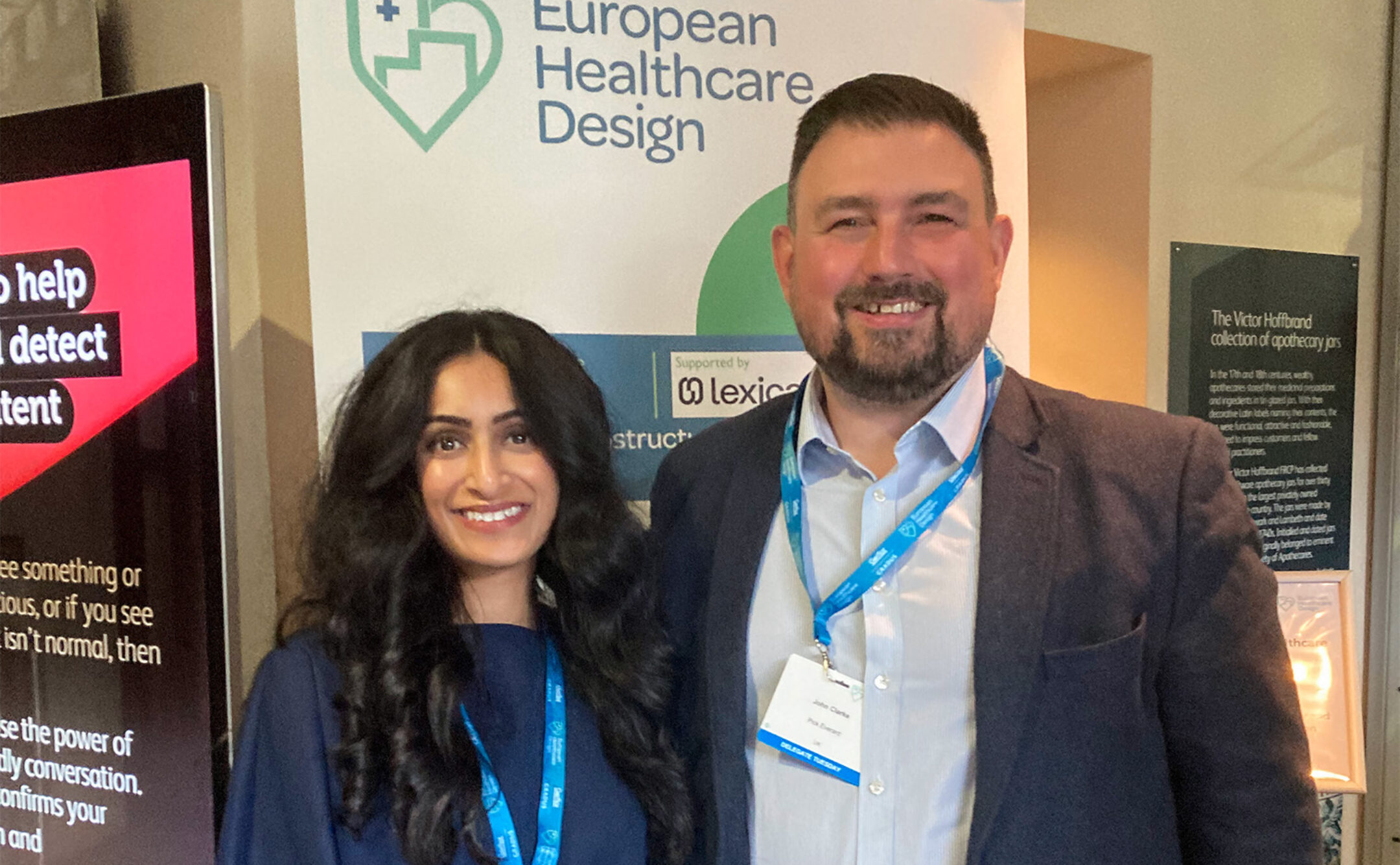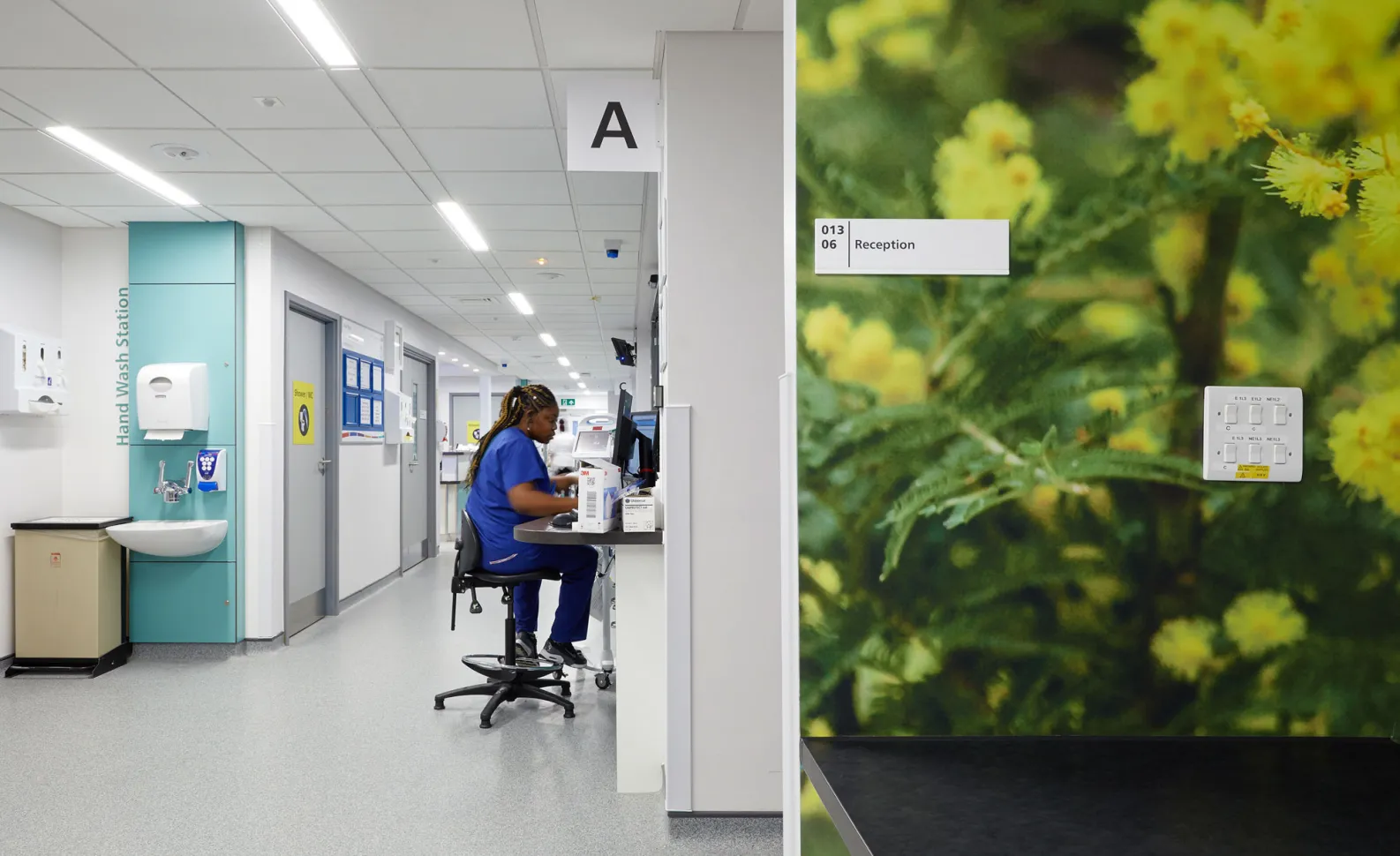Insight
Reflections from the European Healthcare Design Conference
25 Jun 2025
The challenges facing healthcare today are well known, from an ageing population and health inequalities to stretched budgets and climate pressures. These are the real-world issues shaping national conversations, conference agendas, and design priorities.
At the recent European Healthcare Design Conference in London, our director of architecture, Devika Parmar, and director of project management, John Clarke, joined the conversation to discuss how we can respond effectively to the growing crisis.

Health equity
One of the most thought-provoking moments of the conference came from Sir Michael Marmot, Director at the UCL Institute of Health Equity, who highlighted the widening health inequalities seen across the UK.
Life expectancy in the UK had been steadily increasing for a long time, with notable gains between 1919 and 2010, but has since plateaued, signalling deeper systemic issues.
Marmot emphasised that national policy has a profound impact on local health outcomes, suggesting that while local interventions are vital, they must be supported by equitable, top-down change.
John commented: “It was a really fantastic and thought-provoking talk. One of the points that really stuck with me was how long it takes for someone born into poverty to escape it—on average in the UK, it takes five generations. That reality should shape the way we design and deliver healthcare infrastructure. If we want to reduce those inequalities, we need to build facilities that are accessible, welcoming, and capable of supporting holistic care in the community.”
Designing healthy ecosystems
One of the dominant topics of discussion was the shift away from the outdated idea that every community must have its own hospital. Instead, the conversation is moving towards regional healthcare networks that are connected by smart infrastructure and supported by redefined professional roles.
Devika added: “The traditional healthcare estate model isn’t always fit for purpose. Instead, we’re seeing a move towards decentralisation, bringing services closer to where people live, work and socialise. That means designing in a way that puts community first, whether through high-street health hubs, diagnostics in retail units, or integrated ‘health villages’ that bring together different services in one place.”
Health on the high street
Inspired by the retail sector, Ibrahim Ibrahim, Managing Director at Portland Design, explored how healthcare can shift from a traditional model to more people-focused environments through concepts such as ‘hospital as brand’.
At the heart of this approach is community. People want better, more personalised services, but rather than building new hospitals, Ibrahim proposed deconstructing them, embedding healthcare services in existing spaces with high footfall, such as former retail units. These spaces often feature large windows and open views, supporting wellness through natural light and circadian rhythms.
John said: “We’re seeing this approach already in action. The NHS Blood and Transplant donor centre in Brixton is a great example, where our team have repurposed a disused retail unit into a modern, accessible healthcare facility. By placing services at the centre of the community, we’re engaging more people and making healthcare more approachable.”
Between December and February, more than 3,770 people donated at the Brixton Blood Donor Centre. Pick Everard acted as project manager and contract administrator, transforming the empty unit into a welcoming, fully equipped space featuring nine donor beds, six consultation rooms, a purpose-built nursing station and support facilities.
Adaptive reuse, retrofit and refurbishment
For too long, the default solution to healthcare demand has been to build new. But with growing environmental concerns, limited funding, and legacy infrastructure challenges, this model is no longer sustainable.
John said: “We need to stop seeing refurbishment as a compromise. In many cases, it’s the smartest solution, allowing us to revitalise existing assets, address backlog maintenance, and create modern spaces that reflect evolving clinical needs. Each estate is unique, and that requires a strategic, place-based approach to future-proofing.”
Refurbishment programmes also offer a more sustainable route forward. Ward upgrades, repurposed spaces, and better design can significantly reduce carbon emissions while enhancing the patient and staff experience. From outdated buildings with poor record-keeping and clinical limitations to underused estates, the potential to unlock value is huge.
Advances in AI, digital tools, and personalised medicine are allowing patients to manage their health proactively. To support this, infrastructure must be flexible, efficient, and embedded in the wider health ecosystem. Not built in isolation.
Reframing the patient experience
One of the most powerful sessions came from HKS Architects in Singapore, who delivered a presentation on how adaptive reuse and humanistic design can redefine what patient-centred care truly means. Their approach went beyond clinical function, emphasising empathy, dignity, and the full spectrum of human experience.
A particularly poignant question was raised: Why do we speak so openly about birth, yet avoid conversations about death?
In hospitals, when a patient passes away, their body must be moved from the ward with care and respect. Yet the routes for this are often overlooked in design.
Devika said: “The room was quiet—you could feel the weight of the question. As architects and designers, we have a responsibility to create spaces that respect every part of the human journey. That includes designing with sensitivity around the realities of death. It’s not just about functional spaces, it’s about emotional ones too.”
This human-centred perspective ties back to the broader shift in thinking, from treating illness in isolated settings to building environments that support holistic, dignified, and inclusive care throughout life and death.
Looking ahead
We must break away from outdated models and instead prioritise accessibility, equity, and sustainability in everything we design and deliver.
At Pick Everard, we’re committed to being part of that change and we do so by collaborating with clients and communities to shape spaces that deliver better health outcomes for all.
Want to know more about how we’re supporting the future of healthcare estates? Get in touch with our team.
Healthcare
We have worked with more than 50 NHS trusts, charities and private organisations providing healthcare services on the full range of projects.
